#korean history
Text
You simply cannot take a stance against Imperialism whilst simultaneously believing in, and upholding, propaganda against North Korea. It is you responsibility and duty to unlearn what you’ve been told about North Korea.
#north korea has never been the enemy#north korea#anti capitalism#anti imperialism#communism#socialism#korean war#korean history#free palestine
1K notes
·
View notes
Text
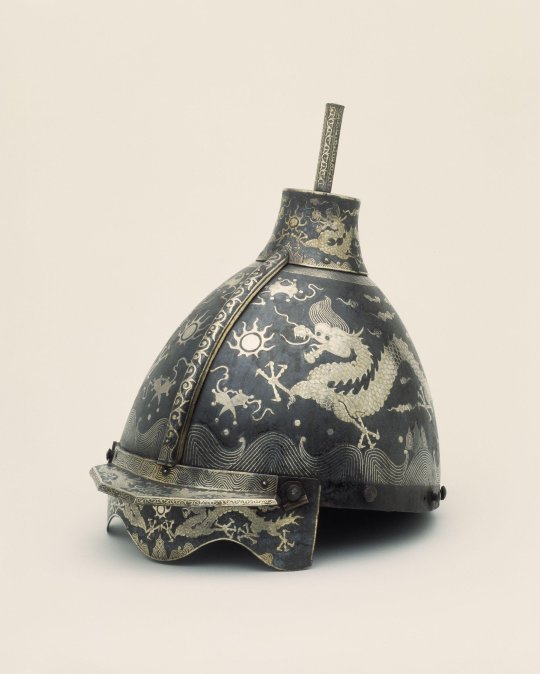

Silver inlaid helmet, Korea, circa 1550-1650
from The Victoria & Albert Museum
724 notes
·
View notes
Text
I've seen a lot of (usually white) feminists talk about how western/European women should also replicate/do '4B' as well just as Korean women have -without recognizing or understanding the context with which 4B arose.
The current very right-wing South Korean President, Yoon Suk Yeol, is very much responsible for continuing to put the health, well-being, as well as safety of Korean women at risk. Whether it be through him vehemently stating gender discrimination no longer exists to attempting to abolish the ONLY organizing that focuses on supporting women -the Ministry of Gender Equality and Family.
He has also only added a handful of women into his cabinet AFTER he was criticized for not having done so in the first place. When he was elected back in 2022, my solidarity has and will always remain with women and folks who experience marginalization in South Korea, such as those in the LGBTQIA+ and disability community, among many. I will, nor should NO ONE ever forget how this man campaigned/how he was elected in mass by misogynistic men.
President Yoon Suk Yeol also remarked about creating incentives for MEN by lowering their mandatory military service if they have more children with their wives... needless to say, 4B is specific to the lived experiences and realities of living under patriarchy in South Korea in many elements of her daily life. I stumbled on this video on my fyp, and this Creator gives SO much great context to 4B, and for those who can watch/listen I highly recommend this video as a start to understanding Korean feminism.
#feminist#social justice#feminism#4B movement#south korea#yoon suk yeol#right wing politics#womens rights#smash the patriarchy#fuck the patriarchy#current news#current events#korean feminism#history#feminist history#femicide#tw femicide#misogyny#misogynistic#korean history
113 notes
·
View notes
Text







Women in History Month (insp) | Week 2: Royal Mothers
#historyedit#perioddramaedit#women in history#women in history month challenge#blanche of castile#french history#turhan hatice sultan#ottoman history#ririkumutima#burundese history#african history#louise of prussia#german history#çiçek hatun#bathsheba#jewish history#queen jeongsun#korean history#13th century#17th century#19th century#15th century#10th century bc#18th century#mine#my edits
113 notes
·
View notes
Text
is it rly too much to ask for people to see the dprk not as good (morally faultless and i support every decision the government has ever made) or evil (every word that is bad applies to them because they are bad!) but as a result of history? it's very simple to dispel these myths if you think about what led up to the founding of the dprk.
the korean people freed themselves from japanese military authoritarianism and their theory of natural supremacy of a certain race (the definition of fascism) and built their entire society around opposing that. the dprk is a far left communist state. they cannot be imperialist they defeated US imperialism in a war the US will not let them end and are holding onto sovereignty of their indigenous lands in a way the people of the ROK cannot. they have never subjugated another country economically or militarily (the definition of imperialism).
the founders of the dprk are independence fighters and guerilla soldiers against japanese colonizers and the first president of the ROK was handpicked by the US because they could control him and he went to princeton and harvard. kim ilsung is a staunch anti-imperialist freedom fighter and basically the last man standing of the korean independence movement after the rest were murdered by fascist imperialist forces. you can literally read this on wikipedia even tho wikipedia is CIA/FBI vetted.
if u think about this it makes sense that they would prioritize their military and nuclear weapons to simply keep the US from closing in and destroying the peninsula a second time. there are people trying to leave because they are simply poor because the US will not let them trade for resources they do not have on their land.
#dprk#korean history#it literally makes sense why the descendants of a heroic freedom fighter that brought the country from the brink of extinction#would be respected and admired by the people#and chosen to represent the workers party
609 notes
·
View notes
Text

Why These Imperfect Korean ‘Moon Jars’ Sell for Millions
Old, round, imperfect and beautiful — that’s how fans of Korean art describe the moon jar, or “dalhangari.”
These unassuming, plain white pots have entranced everyone from rapper RM, of K-pop sensation BTS, to philosopher Alain de Botton.
The former director of London’s Victoria and Albert Museum, Beth McKillop, has called the moon jar an “icon of Korean identity.” And if price is any indicator of popularity, one recently sold for over $4.5 million at a Christie’s auction.
This month, a rare example from the late 17th or early 18th century will go on sale at Sotheby’s in New York, where it’s expected to fetch more than $3 million.
“A large moon jar has always been expensive, but I think the big uptick in prices and value is… because their appeal is now global,” said Angela McAteer, Sotheby’s international head of Chinese art for the Americas and Europe, over video call. “You’ve got an international cohort of bidders competing for them, so it’s gone beyond the traditional connoisseur collecting community of Korean art.”

Huge price tags also result from the jars’ rarity. Although made for over a century in the royal kilns of Korea’s last kingdom, the Joseon dynasty, few are thought to exist today. Estimates for the number of larger ones (those more than 40 centimeters, or 15.7 inches, tall and wide) that have survived over the years range from 12 to 30.
Having passed through auction houses and antique dealers across the world, several of these are now in the collections of institutions like the British Museum and Boston’s Museum of Fine Arts, as well as in the hands of private collectors.
‘Owning a piece of happiness’
The first moon jars were created in the royal kilns in Gwangju (a city just outside Seoul, not the larger southern city of the same name) from 1650 to 1750. They were made from pure white porcelain and kaolin clay, and, following the neo-Confucian fashions of their day, the pots reflected values such as propriety, humility, frugality and purity. They were likely used at court and in upper-class homes as containers for food and liquids, or as decorative vessels.
In the mid-20th century, moon jars began gaining international appreciation thanks to influential admirers such as Japanese folk crafts scholar Yanagi Soetsu and British potter Bernard Leach, who bought one from a Seoul antique store in 1935. Leach once said that having a moon jar was like “owning a piece of happiness,” and would later give his to fellow potter Lucie Rie for safekeeping during World War II. It stayed in her studio until her death and was later acquired by the British Museum.
Charlotte Horlyck, lecturer in Korean Art History at the University of London’s School of Oriental and African Studies, wrote in the Art Bulletin journal that after World War II the moon jar “caught the attention of an early generation of postcolonial Korean artists and scholars who sought to restore Korean art history and national identity,” as the pieces “resonated with the visual language of international modernism and minimalism of the mid-20th century while remaining a distinctly Korean work of art.”
The moon jar’s allure
When Sotheby’s announced its forthcoming sale, the auction house described its 44-centimeter (17.3-inch) moon jar as an object that inspired, astounded and soothed those who “stand in its presence.” It’s a funny thing to say about a pot, to speak as if it’s alive, but the jars’ visceral, emotional impact on people is something that comes up time and time again in the literature.

Choi Sunu, a former director of the National Museum of Korea, has described the museum’s moon jars as being like companions, or muses that have inspired his writing and stirred his creativity. Bernard Leach admired the pots for their “natural unselfconsciousness.” In 2012, South Korea’s then-Unification Minister Yu Woo-ik used the pot as a metaphor symbolizing a reunified Korean peninsula (moon jars are created in two hemispherical pieces and joined in the middle).
More recently the rapper RM, of K-pop group BTS, posted a picture of himself hugging a modern-day moon jar on Twitter, telling fans that the pots made him feel calm.
“It’s hard for someone to really comprehend how a pot can make you feel that way,” said McAteer. “It has this real meditative presence. If you’ve sat in front of a great (painting by US artist, Mark) Rothko and you feel this kind of palpable energy emanate from it, and you could sit for hours and just feel something in its presence — the moon jar has that too.”
“The more you look at it, the more there is to see. It looks different from every angle,” she added. “We had real issues with the photography and the catalog because it looks like a different piece every time you rotate it, or you change the lighting. The surface is just alive, you know.”
“You can see how the glaze coalesces; you see these spontaneous bursts of this blush color that’s happening in the firing. You can lose yourself in its surface.”
Modern masters
Modern Korean potters have been inspired by the jars, and a number have come up with their own homages. Ceramist Kim Syyong covers his pots with a black glaze, while Yun Ju Cheol’s versions look spikier like a pufferfish and Choi Bo Ram’s unvarnished, textured blue vases have a denim-like quality.
Others, like Kwon Dae Sup, have looked to closely recreate the process used by the potters of yore. The 71-year-old ceramist produces unadorned white jars and allows for all the beautiful imperfections produced to shine through. He works out of a studio in Gwangju, where the royal kilns that produced moon jars were once located.


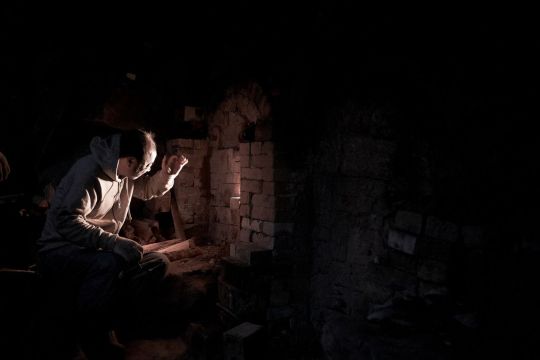
There’s a great deal of preparation that goes into making a moon jar traditionally. It’s labor-intensive: washing, sifting impurities from the clay, kneading and rolling it to remove air bubbles, carrying around these large hunks, not to mention hand throwing the clay itself to that oversized bowl shape without collapsing, and the work keeping a pine wood fire burning for 24 hours while the pot hardens in the kiln. Kwon also built his own kiln to replicate the old process as closely as possible.
“I do this because it’s fun,” he said in a phone interview. “Every time I make something, it’s novel … The quality of the material is different every time. The conditions in which I make the pots is new every time.”
Kwon said he also feels an emotional connection to the moon jar. As a student he was so moved by a one he saw in a Korean antique store that he decided they would be his life’s work. “They feel alive,” he said.
In a 2019 book on his work by Axel Vervoodt Gallery the potter is quoted saying he tries to produce art that needs no addition or subtraction. “I wish to create work that has an imposing presence but harmonizes with its surroundings regardless of where and when it is displayed. It should give peace of mind and a sense of comfort to all who look at it.”
By Christy Choi.
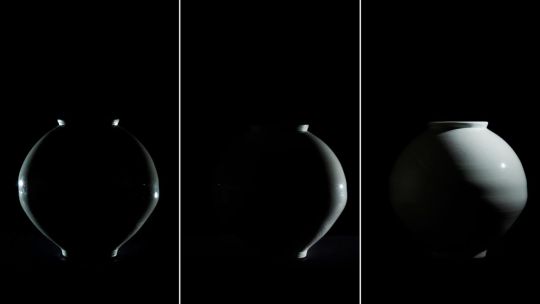
#Moon Jars#Why These Imperfect Korean ‘Moon Jars’ Sell for Millions#Dalhangari#Joseon dynasty#pottery#porcelain#Bernard Leach#Lucie Rie#Kwon Dae Sup#ancient artifacts#archeology#archeolgst#history#history news#ancient history#ancient culture#ancient civilizations#korean history#korean art#art#artist#art work#art world#art news#long reads
127 notes
·
View notes
Photo
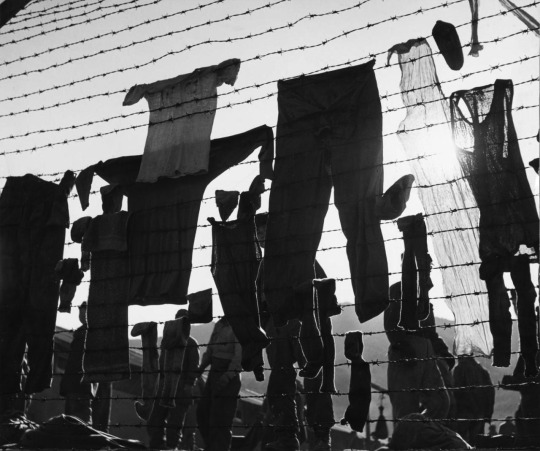
Werner Bischof. Koje Do Island camp. South Korea. 1952
Follow my new AI-related project «Collective memories»
#BW#Black and White#Preto e Branco#Noir et Blanc#黒と白#Schwarzweiß#retro#vintage#Werner Bischof#Koje Do Island#camp#South Korea#Korean war#Korean history#1952#1950s#50s#history#histoire#história#Geschichte#歴史#historical#historisch#histórico#historique
59 notes
·
View notes
Text





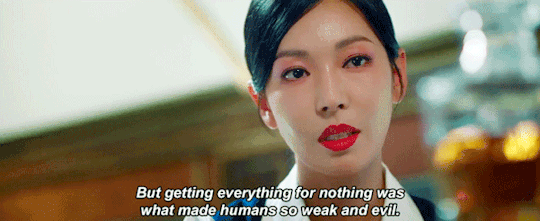
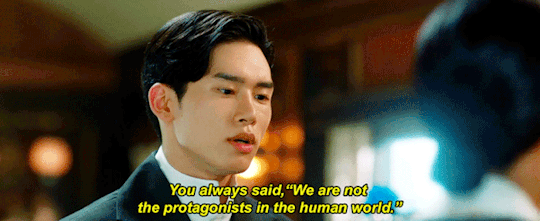


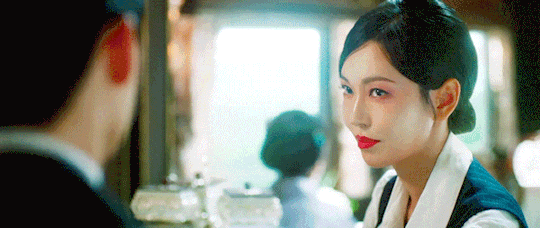
야견박살령 / Wild Dog Massacre Order
Dogs were slaughtered by the Japanese government in occupied Joseon, officially to counter rabies from unregistered dogs, but actually to obtain fur and leather for war supplies for the Japanese army.
Donggyeongi dogs were killed for leather and because the Japanese believed they resembled Komainu [temple-guarding dog statues]. Even after Liberation in 1945, the dogs' short tails were seen as bad luck, and the breed fell out of favour.
Sapsaree dogs, whose name means “the dogs that ward off evil spirits or misfortune” are shaggy-haired dogs that were killed in large numbers by the Japanese military, which used their fur to make winter coats. By the mid-1980s, only eight remained.
Jindo dogs were comparatively spared because of their resemblance to the Japanese Kishu dog.
During the occupation period, most native Korean dog breeds were pushed to extinction.
Until 1945, over 1.5 million dogs were slaughtered.
[X][X]
Tale of the Nine Tailed 1938 | Episode 05
#tale of the nine tailed 1938#tale of the nine tailed#kim so yeon#han gun yoo#yoo jae yoo#ryu hong joo#ryu hong ju#kdrama#kdramaedit#kdramadaily#gumihodyeon#gumihodyeon 1938#history#korean history
167 notes
·
View notes
Text
ART HISTORY WORD LIST
I'm slowly reading a book called 청소년을 위한 한국미술사 (Korean Art History for Youth). In the process I came across many interesting terms that may be useful for those who are interested in Korean art and history and maybe would like to read about such topics in Korean in the future. So I decided to share the vocabulary list. Perhaps, to be continued.
선사 [先史] - prehistory
도안 [圖案] - design
암각화 [巖刻畵] - petroglyphs
청동 [靑銅] - bronze
빗살무늬 토기 - comb-pattern pottery
유물 [遺物] - relic, artifact
미의식 [美意識] - aesthetic sense
창의력 [創意力] - creativity
삼국 시대 [三國時代] - Three Kingdoms of Korea
불교 [佛敎] - Buddhism
부처의 현신 [現身] - the Buddha who appeared in the form of a famine in order to save sentient beings
소재 [素材] - material
국교 [國敎] - established religion
강대국 [强大國] - (world) power, powerful nation
학술 [學術] - scholarship
석총 [石塚] - stone grave
석실봉토무덤 [石室封土무덤] - stone-filled tomb
기원전 [紀元前] - B.C. (Before Christ): 기원전 50년 - 50 B.C.
고고학 [考古學] - archaeology
묘제 [墓祭] - a memorial service held before the grave
전기 [前期] - the former part
평면도 - ground plan (architecture)
초상화 [肖像畵] - portrait
고분벽화 [古墳壁畫] - ancient tomb mural
사당 [祠堂] - shrine
신주 [神主] - ancestral tablet
경외감 [敬畏感] - sense of awe
환희 [歡喜] - (great) joy, delight
전달력 [傳達力]- transmission
구체적 [具體的] - detailed
기인하다 [起因하다] - result from
순수 [純粹] - purity
공예품 - handicraft, craftwork
문화재 [文化財] - cultural properties
보관 [保管] - storage
걸작 [傑作] - masterpiece
보고 [寶庫] - repository
청자 [靑瓷] - celadon
극치 [極致] - the height (of)
영토 [領土] - territory, domain
만주 [滿洲] - Manchuria
수나라 [隋나라] - Sui Dynasty
당나라 [唐나라] - Tang Dynasty
명장 [名將] - great commander
저항하다 [抵抗하다] - resist
패망하다 [敗亡하다] - collapse

#korean#word list#korean vocabulary#korean language#langblr#learning languages#language study#foreign languages#language blog#korean word of the day#hangul#hanja#korean history#korean art#한국어#한국미술사
58 notes
·
View notes
Text
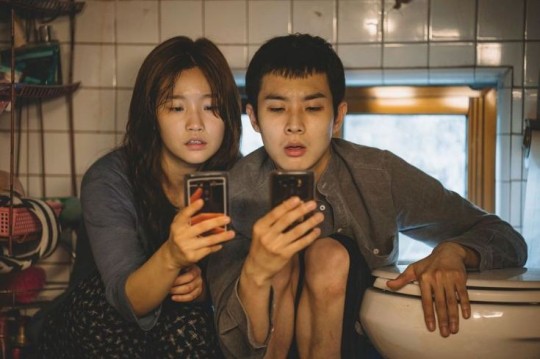
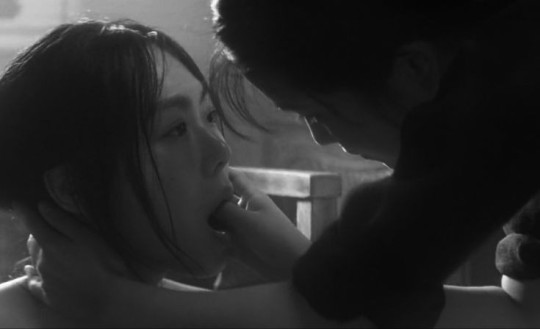


Korea 1930 - South Korea 2019
The Handmaiden directed by Park Chan-Wook (2016)
Parasite directed by Boon Joon-Ho (2019)
#south korea#cinematography#korean cinema#korean culture#Korean films#the handmaiden#the handmaiden photos#kim taeri#Kim Tae-Ri#Kim Minhee#Kim Min-Hee#park chan wook#boon joon ho#parasite 2019#parasite pics#parasite#oscar winner#korean history#30s#war movies#sapphic movies#sapphic films#lesbian films#lesbian#orkuts#lgbt#pride
66 notes
·
View notes
Text
Worldbuilding: Bottlenecks
In the real world, making anything usually runs up against at least one key limiting factor. For fabric, it was usually how much spun thread you had. Estimates in the 1800s were that it took five full-time spinners to supply one weaver. There are reasons why one of the first things water power was applied to was spinning. In making something as “simple” as a pizza from scratch, you have multiple potential bottlenecks, including but not limited to flour, yeast, oven fuel, toppings, you name it. And in making arrows, it’s usually the shafts that hold you back. Heads can be cast from metal or chipped from stone; fletching just needs large enough birds. But straight arrow shafts of the right length? Those are trickier to get hold of, and an excellent reason to scour the battlefield for still-usable arrows.
This also led to Korea having a military secret for centuries - a way to shoot half-length arrows from full size bows. Meaning they could pick up enemy arrows and use them, but invaders couldn’t shoot the tiny ones back.
Bottlenecks are a great way to throw obstacles at your characters. If you’ve established that something is rare, or in limited supply at that time, then when a Problem crops up that needs some of that finite supply and your characters don’t have it... cue sudden diversion, or even splitting the party. Which gives you ample opportunity to throw other problems and encounters at them, with a Ticking Clock along for the ride.
It doesn’t even have to originally be in limited supply. Storms, fires, and earthquakes can ruin storage; a noble throwing a vast Entertainment or a Bridezilla on the rampage might not leave one caterer standing. Your characters may think they’ve got their Evil Overlord Destroying Potion ingredients list down - and then find out no, no they don’t. At which point they have to get what they need from someone who really doesn’t want to give it up... or they need to find a substitute. With unpredictable results.
Or, they may just have to come up with a different way to handle the Bad Guy. Back to the drawing board, heroes!
Note, you shouldn’t bait-and-switch your characters this way too much. Otherwise your heroes won’t be the only ones gnashing their teeth. Too much, and your readers may wall the book. “There’s five bakeries in this town! How can they not find flour, sugar, and eggs anywhere?!?”
However, if your story is set in an unexpected disaster scenario? Hurricane, alien tsunami, zombie apocalypse; any kind of event where everything is in short supply except trouble? Then throwing your characters loops like this a lot more fair, and much easier on the readers. They’ve been warned!
Think about how things are made, and how your characters will have to make things to get themselves into trouble... and out of it.
The bad guys are closing in. They have what’s in their pockets and random shattered bits of wood and rock. How will they craft their escape?
11 notes
·
View notes
Text

Day 31: Jang Gye-hyang!
Jang Gye-hyang was born into a noble Korean family during the Joseon Dynasty. Her father, a prominent Neo-Confucian scholar, allowed his young daughter to sit in while he was teaching students; soon, she was sneaking into his study to read philosophy texts, and became a gifted poet as well.
Her parents arranged a marriage for Gye-hyang to a widowed family acquaintance; he and Gye-hyang would have seven children, and she was also a devoted stepmother to his two elder children. They settled into a small estate in the mountains. She was noted for her compassion - housing refugees during the 1636 Qing invasion, and planting orchards to feed the poor.
As she aged, Gye-hyang compiled favorite recipes into a cookbook - possibly the first cookbook ever written in Korea's Hangul script. Chinese characters were still the script of choice for academic works in Korea, but Hangul, developed in the 1400s and then banned by several succeeding kings, was undergoing a renaissance. Gye-hyang was a skilled Hangul calligrapher, and the script was the obvious choice for a book meant to be handed down in her family.
Gye-hyang died in 1680, a respected matriarch. Centuries later, her book, the Eumsik Dimibang, was rediscovered. Its recipes, including not only ingredients but detailed cooking instructions, proved a valuable insight into the history of Korean food - and an opportunity for twentieth and twenty-first century cooks to enjoy Joseon cuisine.
#jang gye-hyang#eumsik dimibang#korean history#joseon era#awesome ladies of history#october 2023#my art#digital art#brush credits to firealpaca#food
26 notes
·
View notes
Text
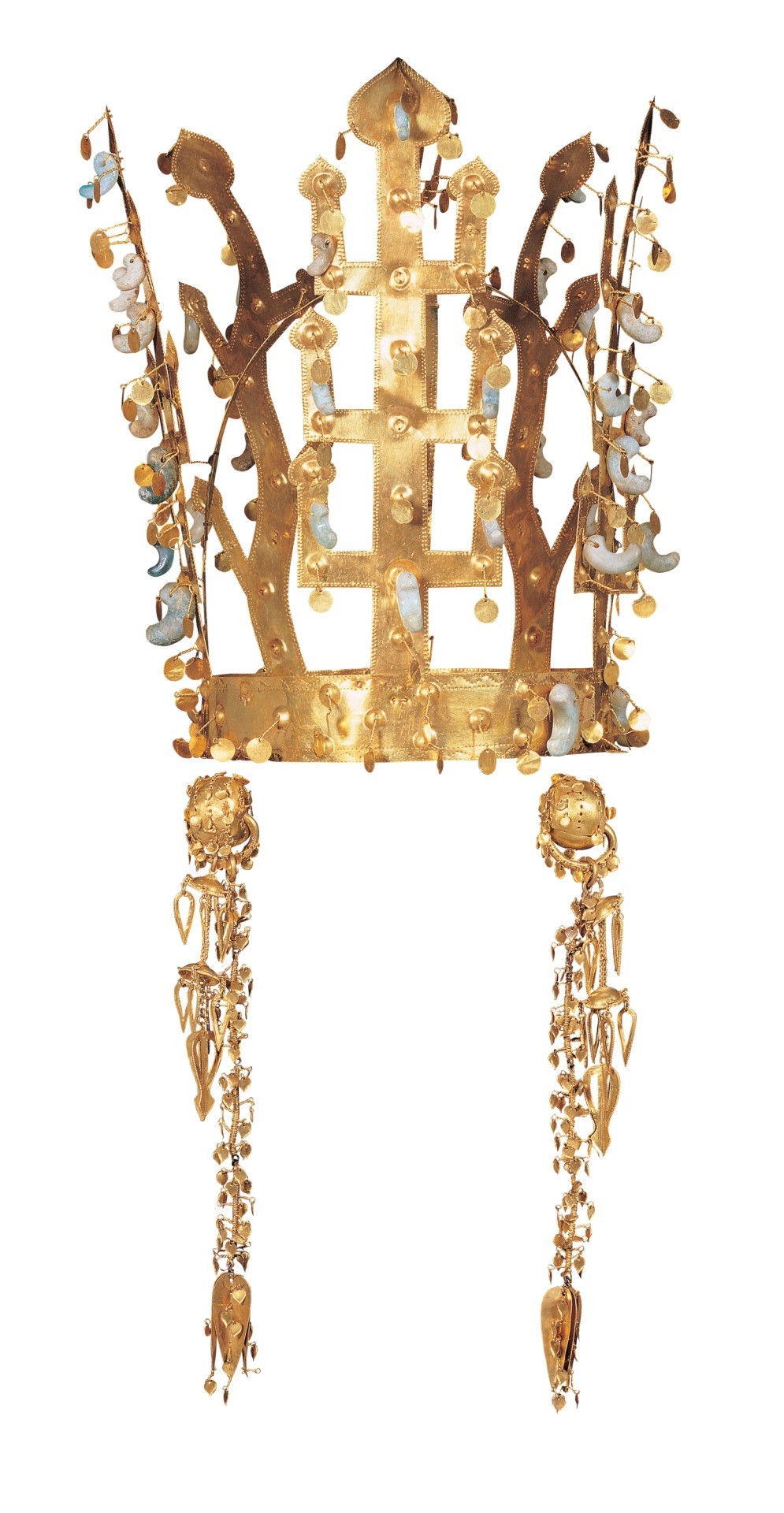
Gold crown excavated from the Seobongchong Tomb in Korea, 5th-7th century AD
from The National Museum of Korea
821 notes
·
View notes
Text

BNO News on Twitter: "South Korea's fertility rate, already the lowest in the world, dropped by another 8 percent in 2023.
New data shows the fertility rate dropped to 0.72, far below the 2.1 needed to maintain the population."
I made a post a while ago about the 4B movement in South Korea and how and why it pertains to the liberation and freedoms of Korean women. The tiktok video I shared a while ago gives background and context to Korean Feminism and current struggles that Korean women still face in their country. If you have the time to look at this as well, I highly recommend watching this video:
I am always in solidarity with Korean women, and I truly hope for real, systemic changes soon. Korean women deserve to always feel safe and protected -to always have the same access to opportunities and more.
#feminist#social justice#current events#current news#feminism#korean feminism#gender equality#gender equity#fuck gender roles#misogynistic#misogyny#south korea#fuck the patriarchy#4b movement#global news#global politics#world news#womens rights#korean history
79 notes
·
View notes
Text
On This Day In History
September 9th, 1948: The Democratic People's Republic of Korea (North Korea) is established by Kim Il Sung.
36 notes
·
View notes
Note
i had a korean friend (living in korea, not korean-american) who told me once that he thought korean people felt a kinship toward black americans because of their history of being continuously exploited (on the korean side he meant by china/japan/the US). obviously i took that with a grain of salt because i'm not ignorant of korea's relationship to antiblackness but i still think about it a lot.
i think an important distinction needs to be made here in which the people of korea, the people of the korean peninsula, the people of joseon, are an ethnically homogenous civilization with a shared national identity of 500 years under the kingdom of joseon and shared cultural history of 5000 years. the koreans who are able to enact material and ideological antiblackness right now are the ones benefitting from the US neocolony that is the republic of korea and the ones that are diasporic (especially in the imperial core). the dprk has historically been aligned with the ongoing political struggle of black people in the US and the black panther party frequently published the writings of kim il sung.
here's a document from the dprk about US antiblackness and the oppression of the black panther party around 1970.

and if you see here, it's simply on a basis of morality and moral political ideology that the korean people stand with black people in the US, there doesn't have to be emotional commonalities. it is simply political and moral necessity to speak up about our support. we are being oppressed by the same regime of US empire and global white supremacy and racial capitalism, it is of the utmost importance to stand in solidarity with other people in struggle.
it's also very cool to see this kind of document. "trenchantly flaying the US imperialists for their occupation of South Korea" goes sooo hard. the US is indeed "the chieftan of world imperialism, the ringleader of world reaction and the common enemy of the world people." the dprk's political morals are a really refreshing reminder that korean people do not all have the same relationship to global hegemony and there have always been korean people who are against empire and struggling for liberation.
and what you're actually talking about here is about the empathetic resonances between the political struggles of black people and korean people, which do exist. they are there and it's important to feel them to begin any kind of political work as a korean person, though politics should not be based around anecdotal and emotional resonances only. korea was known as the shrimp between 2 whales between china and japan for 5000 years and china's word for korean people is eastern barbarians. many artistic, technological, and cultural innovations credited to china and japan are actually korean. china and japan would kidnap hundreds of artisans and scholars every time korean people invented something they wanted and usually the korean kingdom (unified silla, joseon, etc) was a vassal to china or economically beholden to japan so they couldn't stop it. even cherry blossom trees that are the japanese national symbol were first taken from the silla kingdom. and then planted all over joseon during japanese occupation hundreds of years later to show that joseon now belongs to japan. the constant cycles of theft, labor exploitation, disrespect, and humiliation are present in both peoples for sure. and korea spent decades freeing ourselves from japanese colonization and succeeded, only to be overtaken by US military occupation 3 days later. and then divided in half and made to be in perpetual war with our other half.
there are resonances with black people's constant struggle against institutional, ideological, and cutlural violence that seems to be never ending because of the strength of the US empire and global antiblackness. but both of our people can and will be freed, and the empire is decaying as we speak. we both have a lot of our people working for the colonizer's side but that can shift as well. i believe it. we have the same enemy and we outnumber them, we have been struggling for liberation and will one day succeed.
the important distinction here as well is that black people have singularly been exploited in the form of chattel slavery and the ideological work of whiteness to justify chattel slavery is the racial formation of the entire world. the entire world operates on an economic and ideological system of antiblackness.
i think every korean person coming to terms with the truth of the world needs to necessarily do massive amounts of academic and internal and physical work to come to terms with global antiblackness and our part in it, to redistribute any resources we have and support black people's vital struggle against empire. that is the first step to actual material solidarity, korean people have to make those changes within themselves and their lives first. like to even be able to relate to black people normally without the distortion of global narratives about blackness is going to require a lot of work. restructuring the way you and relate to the world and changing how you move in the material world as a result of that political realignment is deeply necessary for undoing the antiblackness embedded in everyone.
47 notes
·
View notes